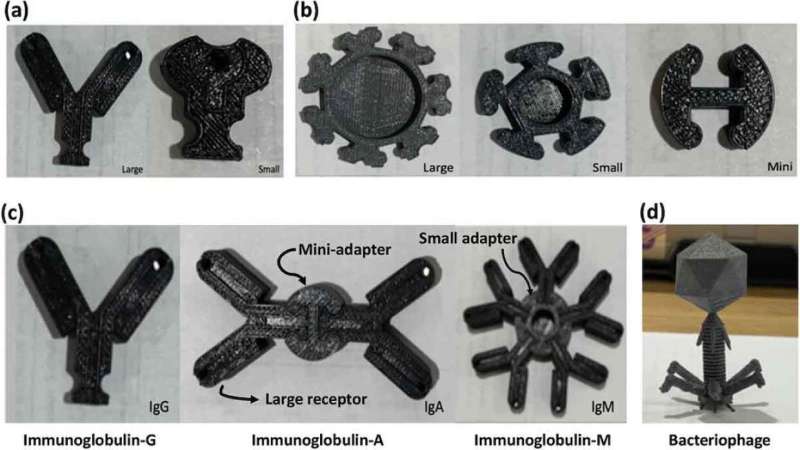Researcher studies impact of 3-D-printed models on student learning

"While Science, Technology, Engineering, and Mathematics (STEM) education is essential in the high school curriculum, it often carries a reputation of being formidable and overwhelming," Julia Monkovic, a senior majoring in Chemical and Biomolecular Engineering, says.
She hoped to help remedy that as an NYU Tandon Science Outreach and Research (SOAR) fellow. The fellowship initiative was spearheaded by Professor of Chemical and Biomolecular Engineering Jin Montclare and is aimed at inspiring the next generation of engineers, chemists, and coders by sending select Tandon students into high school science classrooms and labs to serve as instructors and mentors.
Monkovic took part as a sophomore and junior, working with ninth-graders from Brooklyn's Urban Assembly Institute for Math and Science for Young Women, where she taught a unit on homeostasis and immunity.
"Conventional teaching methods of recent decades are heavily based on textbooks and lectures, often referred to as 'frontal teaching,' or 'chalk-and-talk,'" she explained. "But students have a strong inclination towards technology-enabled learning, and our educational system must change with them."
To that end, she created 3-D-printed models of several antigens and the antibodies that fight them, allowing students to connect them to represent the binding that occurs as the body fights off a pathogen. "Concepts like this require developing complex, cognitive 3-D mental rotation skills, yet traditionally the knowledge required to attain these skills is presented in a textbook or PowerPoint presentation–both of which are heavy in text and 2-D pictures," Monkovic says. "The 3-D prints helped the students to effectively learn the material leading to a better understanding and retention of the topics." She found proof in her data.
Quizzes were given to all students before they took the lesson to test their knowledge of the topic; afterward, quizzes were given to both a group that had used the 3-D models and a control group that had been taught the same information, but in a more conventional manner, with handouts and worksheets, in order to measure any differences in learning and retention.
As Monkovic detailed in her paper, "From concept to reality: the use and impact of 3-D prints as academic tools for high school biology education," published in late January in the Journal of Biological Education, the results from the students' performance, as well as teacher and student feedback obtained via survey, demonstrate the effectiveness of employing 3-D prints in the biology classroom.
"We have learned that 3-D prints can empower student-driven engaged learning, provide a physical model of biology for students to understand what going on in the nanoscale, and drive notable improvements in student comprehension—all especially important factors at a time when much instruction has been moved online," Montclare says. "Julia and the other SOAR fellows are developing much-needed new modes of STEM learning."
More information: Julia Marie Monkovic et al. From concept to reality: the use and impact of 3-D prints as academic tools for high school biology education, Journal of Biological Education (2021). DOI: 10.1080/00219266.2020.1858927
Provided by NYU Tandon School of Engineering



















